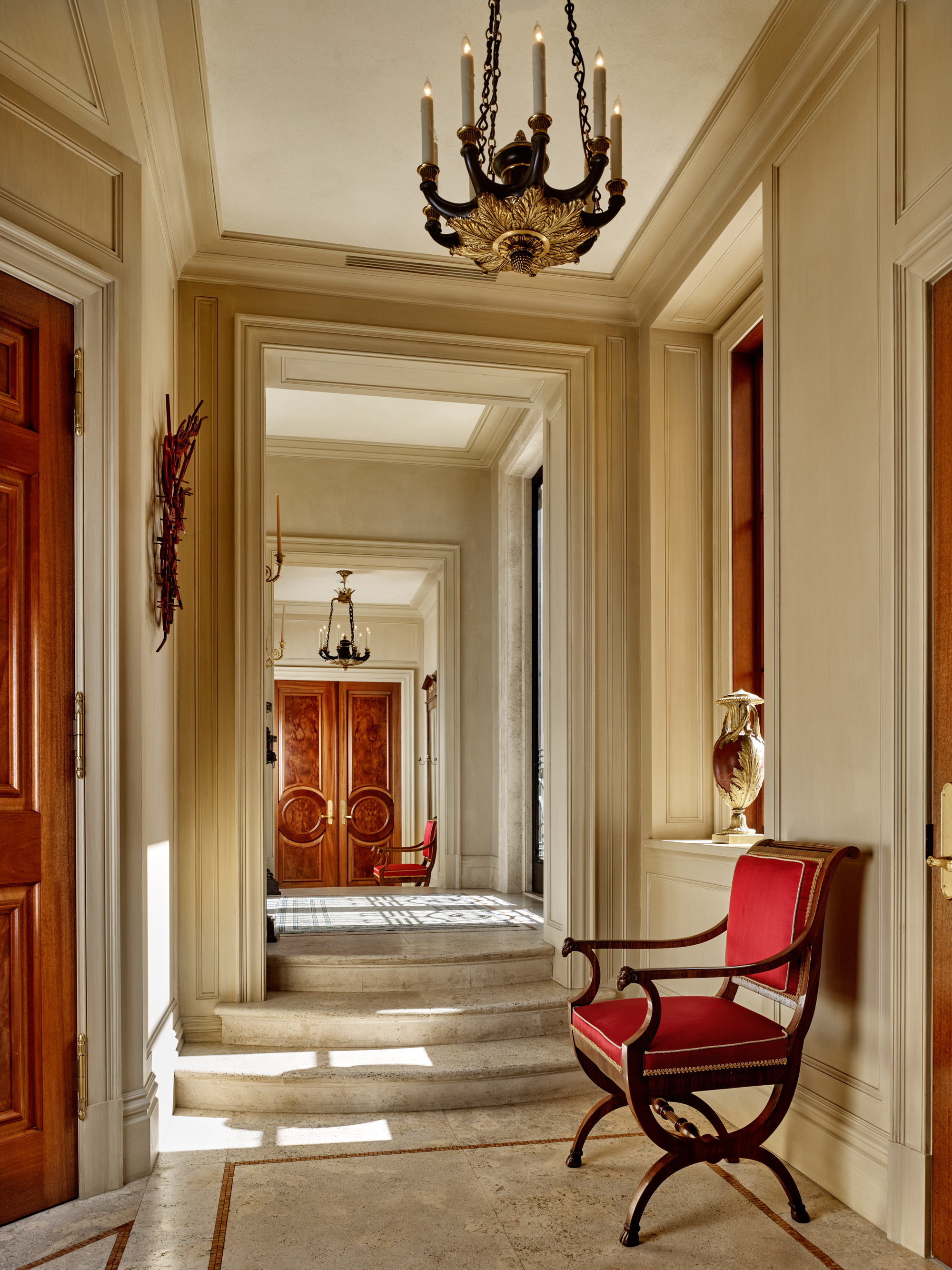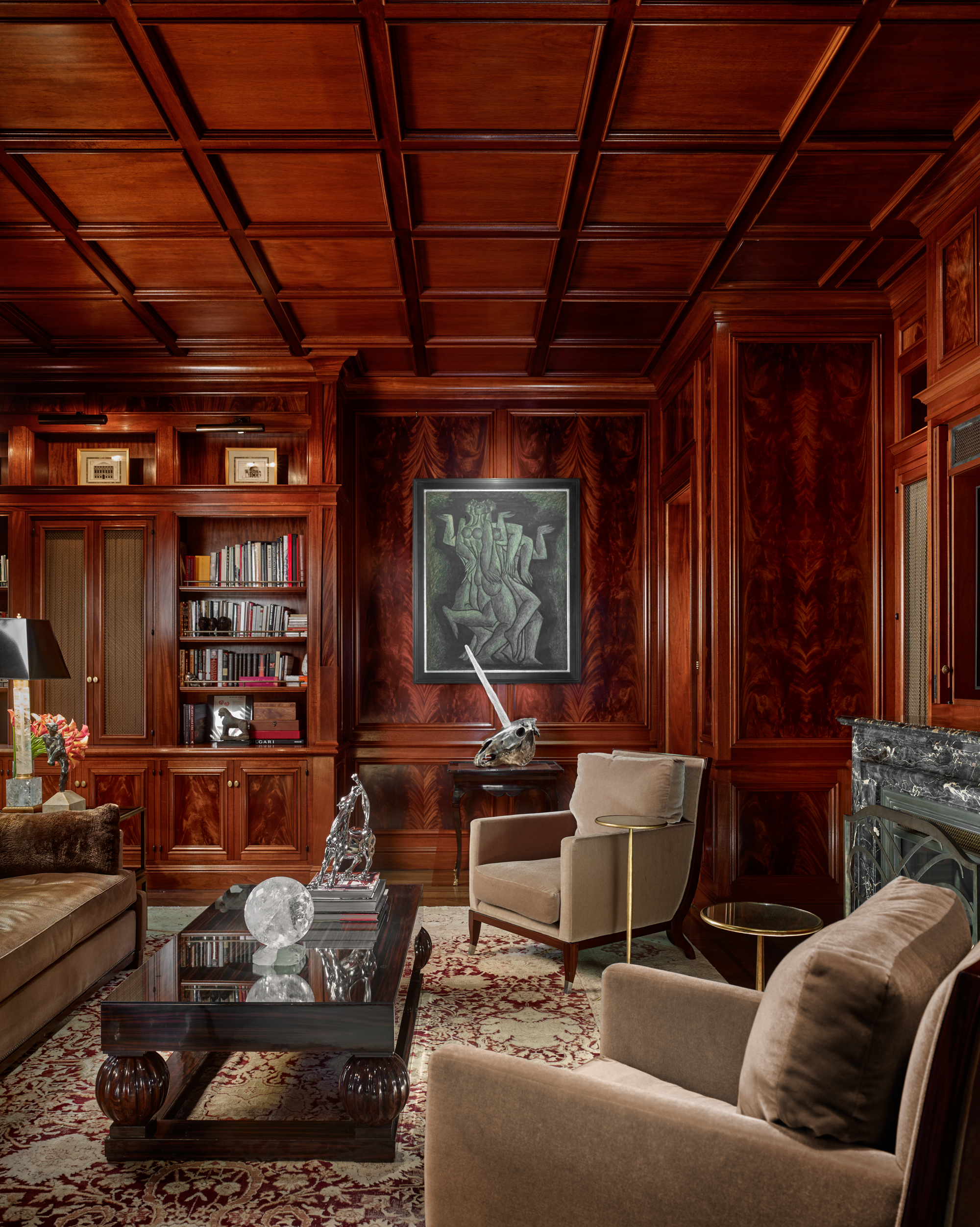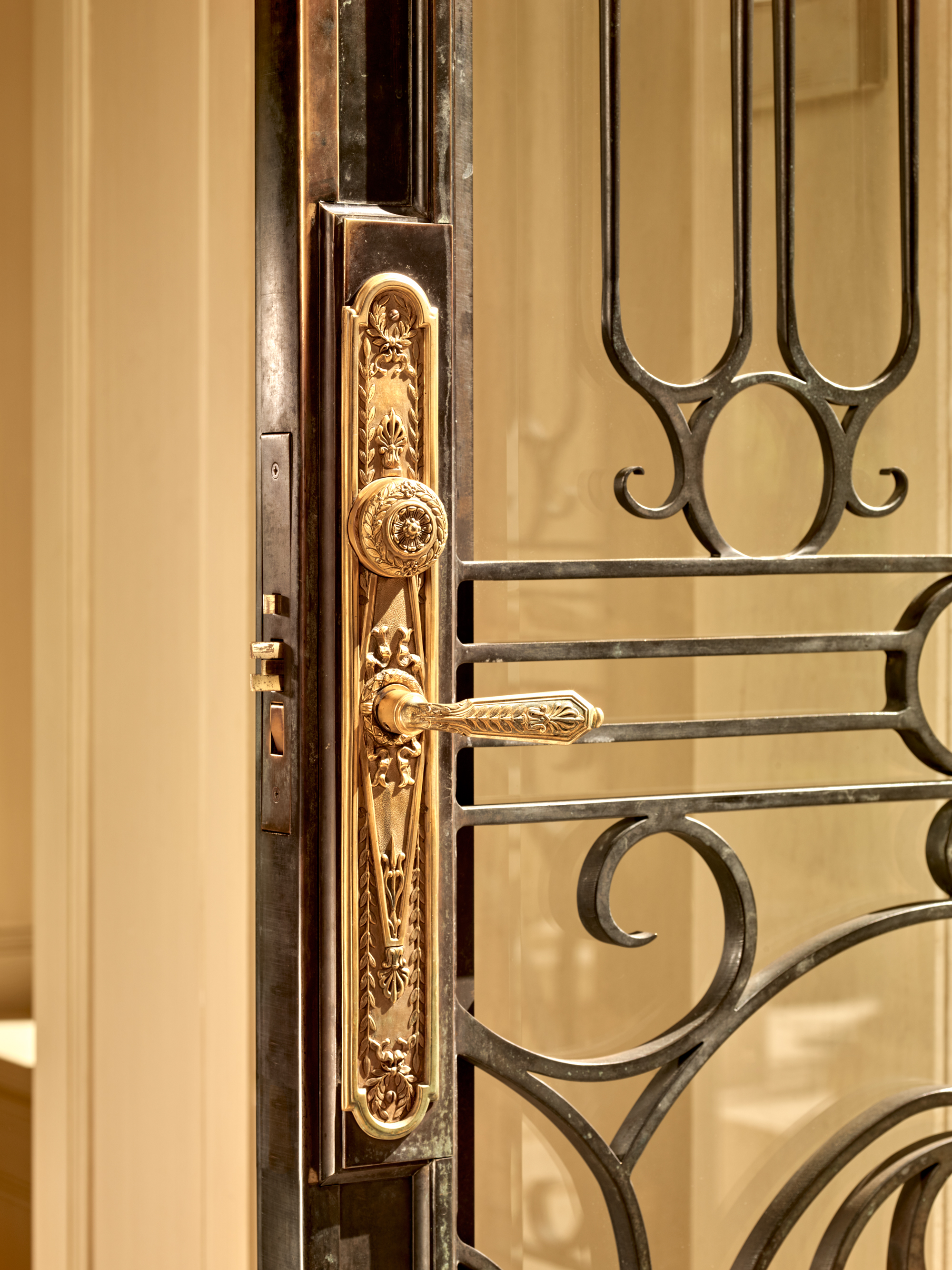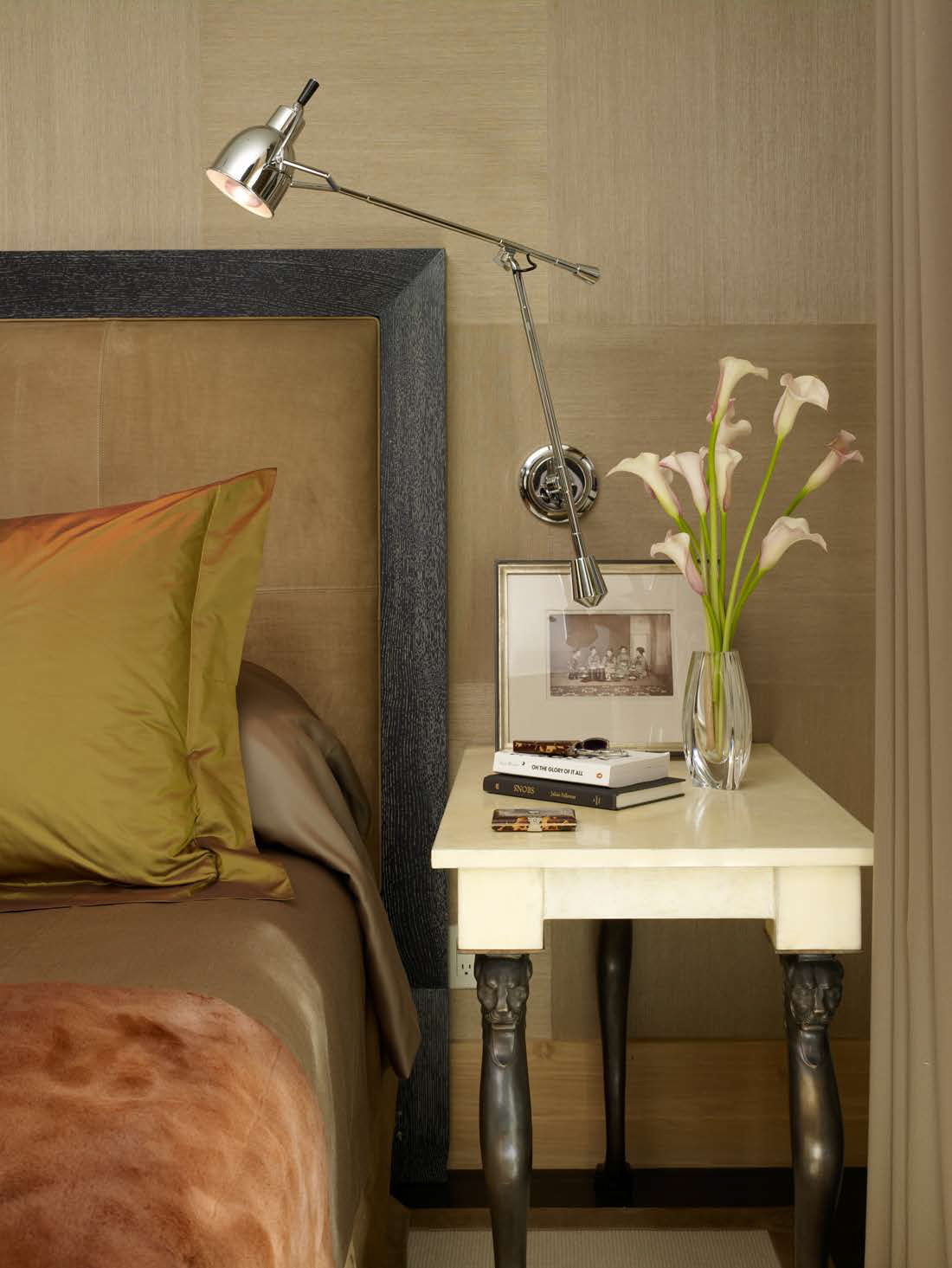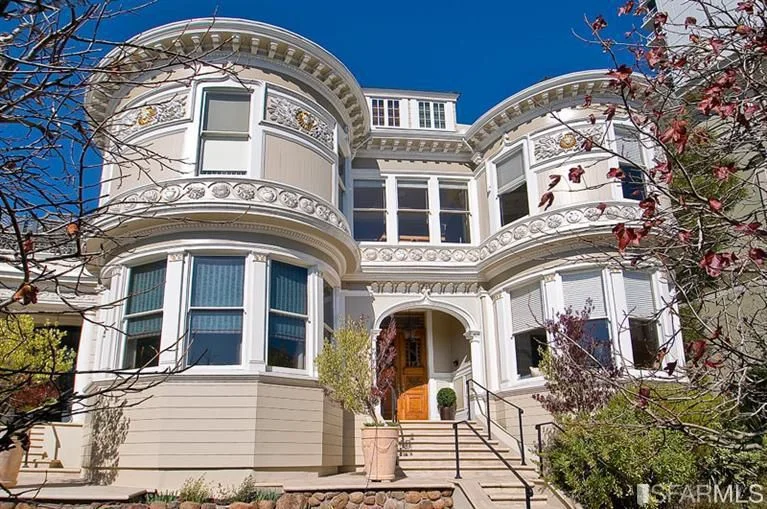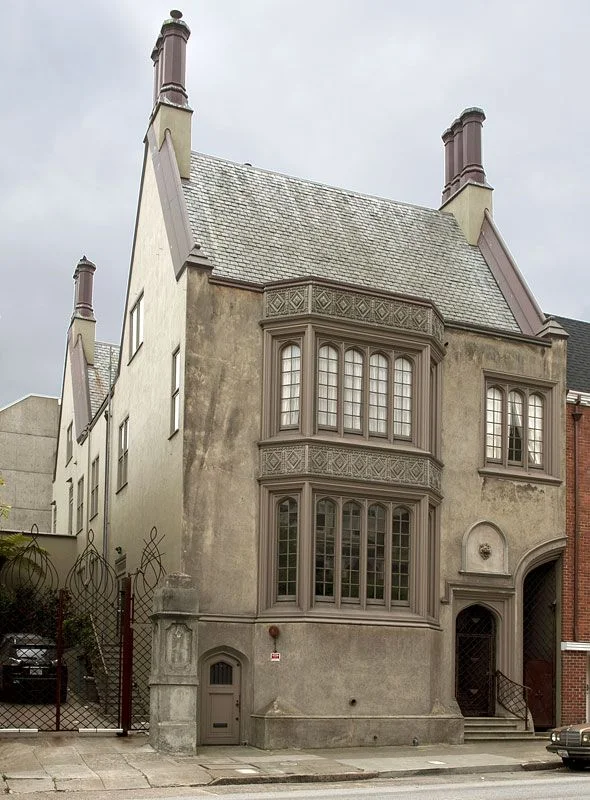David Kensington - David Kensington & Associates
/A Measured Classical Approach
By Joseph Lucier
Operating from an atelier along San Francisco's historic Jackson Square district, David Kensington creates deigns that speak to a bygone era of skilled craftsmanship and luxurious materials. While David's hand has many facets, it is his work in the traditional elements of classicism where he truly shines. Putting his mark down on the city's design scene with his reinterpretation of the penthouse apartment in Conrad Muessdorffer's iconic 2006 Washington Street, David launched a career that integrates contemporary design with a sensitivity towards preservation. A current project has taken him to Commonwealth Avenue in Boston's Back Bay. The stately residence is a 20,000 sqft. 1865 brownstone, originally designed for the Ames Family. The home is in the French Beaux-Arts style made popular under Napoleon III direction of Georges-Eugene Haussmann's renovation of much of Paris . We recently caught up with David to learn more about what makes this design icon tick.
DAVID KENSINGTON
Joseph Lucier: How did your interest in interior design begin?
David Kensington: My interest in architecture, interior design and landscape design began as a child through my family’s eyes. While my immediate family had a fascination with grand scaled period homes from 1890-1930, my extended family was passionate about modernism. My aunt and uncle hired Phillip Johnson to design their home on Lake Minnetonka. Years later they asked him to add a guest house to the property. He refused saying the entire design is perfect the way it is, but if you insist on moving forward I would recommend a young talent name Frank Gehry. They hired him and he built a guest house into a bluff overlooking the lake, as such invisible from the main property. My family's strong interest in art, architecture and design extended to endowments to art museums and continued into the development of the Walker Art Center Sculpture garden. I traveled extensively with museum groups throughout the US, Europe, and south America to explore great private estates, art and furniture collections. I continue to do so to this day to train the eye to see the beauty of design in all of its many forms.
JL: Talk about your first “big job.”
DK: While finishing a master degree in architecture at UC Berkeley, I had an internship at Gensler Architects in San Francisco. They had me working on parking garages in the bull pen of cubicles with the other interns and new hires, but while there I entered a competition to design a lobby for a hip, hot, new hotel chain our department was bidding on. My design caught the developers eye, as well as my lead designer, who suggested my talents may lie more in the field of interior architecture and design and encouraged me to seek employment with the Wiseman Group of San Francisco. I worked my way up the ranks to a designer over a few years, learning my trade and honing my skills along the way. While I was taking some time off from work to focus on building my home in San Francisco, I received a call from Paul's assistant, Suzanna Allen, with an offer to interview a client they wanted to refer. As it turned out this client and I developed three major projects together. One was Villa Atherton (click), modeled after Palladio’s Villa Rotunda. It marked the beginning of my career and a life-long friendship
JL: How has your design aesthetic developed over the years?
DK: I continue to refine my designs to the basics of scale and symmetry. I always begin with cleaning up the architecture to have a cohesive design vocabulary and then add the layers of design and decoration to enhance the overall experience. I used to design a room so it felt complete as you looked into it. Today, I understand to use restraint and acknowledge a room is not complete until it is being used and enjoyed by the family and guests.
JL: Discuss the importance of art and antiques in your interiors.
DK: Art is very important to add a spot of color and fashion to a beautifully refined interior. Beautifully designed and crafted antique furniture made of exquisite materials is the sculpture of the room. It should be used judiciously and celebrated as a masterpiece of old world craftsmanship.
JL: Which dealers at the SFFAAS attract you and why?
DK: Mallet Antiques for the breadth of knowledge of fine antiques and modern classics.
JL: You and Benjamin Steinitz are collaborating on a project in Boston. Talk a little about your professional relationship and the project.
DK: I began buying European antiques over twenty years ago. I worked with Bernard Steinitz, Benjamin’s father, way back in the day. He had one of the most impressive of all the high-end Parisian antiques dealers. Always the best of the best with Benjamin continuing the tradition today. Benjamin is a first-rate dealer and a wonderful collaborator when it comes to putting a truly impressive collection of art and antiques together. We are currently sourcing 18th century painted wood paneled rooms to be reinstalled in a few very special rooms in our clients 1865 Boston home along with crystal chandeliers and innumerable objects de arts.
Calistoga Residence
JL: What are your favorite materials for creating luxurious interiors?
DK: No mater modern or traditional, it is important to always use the best natural materials. Real limestone plaster ceilings and walls, real wood and stone floors, custom upholstery with kiln dried and doweled hardwood frames built up with natural horsehair and cotton batting all covered in a high quality natural silk can make all the difference. Custom draperies and passementarie, again done in either a fresh modern approach or more traditional manner, always elevate the design integrity of any interior.
JL: What particular architectural style speaks to your personal taste?
DK: I choose to live in a mid-century modern tree house on Buena Vista Park, yet I work on many classically inspired historical renovations. I believe that classicism is the foundation of all great architecture, be it modern or traditional, as long as the guiding principles of site, scale and symmetry are followed. I love the classic simplicity of the Mies van Der Roe's Farnsworth house as much as I am drawn to the great Greek and Roman monuments and the Venetian farm houses of Palladio.
2006 Washington Street Penthouse - Pacific Heights
JL: Favorite weekend getaway?
DK: Las Ventanas
JL: Favorite restaurants?
DK: Kokkari Estiatorio designed by BAR Architects
JL: What do you do to recharge your batteries?
DK: Swim, Bike, Run.
JL: What are you currently reading?
DK: Alexander Hamilton by Ron Chernow, A Gentleman in Moscow by Amor Towles, and a history of the Hawaiian Islands and their inhabitants
Visit David Kensington
Many thanks to David Kensington and Whitney Robinson for working with me on this feature!



